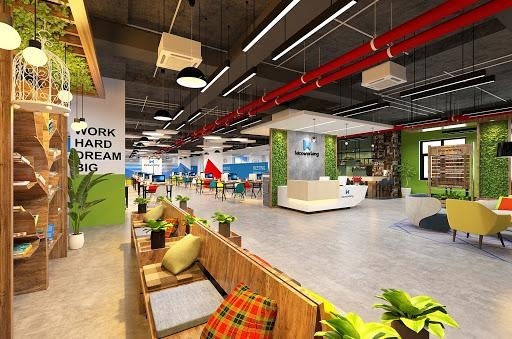The Covid 19 epidemic has changed the way many businesses and individuals work. The form of working at home - Work From home has proven its efficiency and utility. Also from here, the designers of office furniture and businesses themselves need to change their minds to ensure the operation and meet the needs of workers.

During a pandemic, teleworking becomes a must. After a long period of implementation, this form has shown the effects and benefits that it brings to businesses and employees working there. And the combined working model - working from a distance in the office has become a popular model in the post-pandemic period. Even now, the disease may come back at any time, companies and workers themselves need to be prepared to ensure normal business operations and reduce office running costs. And to do this, we need to notice adjustments right from the office construction and allocation, layout in the working space.
Transfer from personal workspace to community workspace
Normally, each employee in an enterprise always has a personal workspace where only one person works during their time with the business. They will use the space as their workplace with personal characteristics and décor. They will feel uncomfortable having to share that space/seat with someone else. However, after the pandemic, people needed to move from "my workplace" to "our workplace".

Provide different workspaces for different types of jobs
Today's office construction focuses on a variety of locking workspaces. This is intended to show respect for different work styles and needs, providing employees with a choice of dynamic spaces and quiet areas for everyone to be the most productive and happy. most when they are in the office. We are likely to see more of this in the years to come, as the youngest generation of workers come to the office with well-formed strategies and ideas to help them become effective and engaged employees.
Fully equipped with technical equipment and space utilities for working remotely
Ideally, switch between working in the office and working from anywhere seamlessly. In the office, unbound technology allows employees to switch between environments for different types of jobs. And when it's time to work remotely, they can grab their laptops and phones and be productive. Of course, this requires more robust technology infrastructure such as large meeting rooms with projectors, software platforms that allow meeting and controlling online work.

